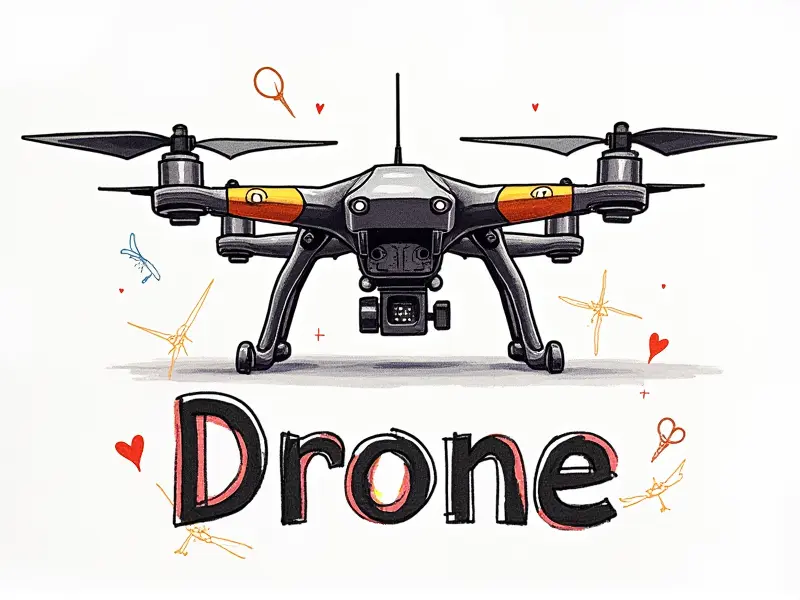FPV drone antenna gain?

Understanding Antenna Gain in FPV Systems
Antenna gain is a critical factor in the performance of First-Person View (FPV) drone systems. It measures how effectively an antenna focuses radio waves, enhancing signal strength and range. In FPV applications, high-gain antennas are essential for transmitting video feeds from drones to ground stations or goggles.
Antenna gain is typically expressed in decibels relative to isotropic radiation (dBi). A higher dBi value indicates a more directional antenna that concentrates the radio signal into a narrower beam. This focused energy can significantly extend the range of your FPV system, but it also narrows the field of view.
Optimal Antenna Gain for Long-Range FPV
For long-range FPV applications, such as racing or filming over large distances, high-gain antennas are crucial. A typical setup might include a 7 dBi whip antenna on the drone and a directional Yagi-Uda antenna with up to 13 dBi gain at the ground station.
- Whip Antennas: These omnidirectional antennas provide uniform coverage in all directions, making them ideal for drones flying over diverse terrains. A 7 dBi whip antenna offers a good balance between range and flexibility.
- Yagi-Uda Antennas: Directional antennas like the Yagi-Uda are designed to transmit signals in one direction with high efficiency, making them perfect for long-range FPV setups. A 13 dBi Yagi-Uda antenna can extend your range significantly.
Best Antenna Gain for Competitive FPV Racing
In competitive FPV racing, every millisecond counts, and maintaining a strong signal is paramount. For such high-speed applications, antennas with moderate gain are often preferred to balance range and field of view.
- Moderate-Gain Antennas: A 5 dBi whip antenna on the drone paired with an 8-10 dBi directional antenna at the ground station provides a good compromise between range and signal stability. This setup ensures that you can track your drone even when it's moving rapidly across different directions.
Maximizing Range with FPV Drone Antennas
To maximize the range of your FPV system, consider these tips:
- Select High-Gain Antennas: Use antennas with higher gain values to extend the transmission distance. For example, a 10 dBi directional antenna at the ground station can double or even triple your effective range.
- Optimize Placement: Ensure that both the drone and ground station antennas are positioned correctly for optimal signal strength. Avoid obstacles like buildings or trees that might interfere with the transmission path.
The Impact of Antenna Gain on FPV Performance
The choice of antenna gain directly affects several aspects of your FPV experience:
- Signal Strength: Higher gain antennas deliver stronger signals, reducing the likelihood of dropouts or interference.
- Range: Antennas with higher dBi values can transmit over longer distances, enabling you to fly your drone farther from the ground station.
- Field of View: Directional antennas narrow the field of view, which might be a drawback in scenarios requiring wide-angle coverage.
How to Boost FPV Signal Strength
To boost your FPV signal strength and ensure reliable communication between drone and ground station, follow these steps:
- Upgrade Antennas: Switch to higher gain antennas on both the drone and at the ground station.
- Use High-Quality Cables: Poor quality or damaged cables can degrade signal strength. Invest in high-quality, low-loss coaxial cables for optimal performance.
- Avoid Interference: Keep your FPV system away from other electronic devices that might cause interference, such as Wi-Fi routers or mobile phones.
Tips for Selecting FPV Drone Antennas
Selecting the right antenna is crucial for achieving optimal performance in your FPV setup. Here are some tips:
- Consider Your Application: Choose antennas based on whether you need long-range coverage or a wide field of view.
- Budget Appropriately: High-quality, high-gain antennas can be expensive but offer significant performance benefits. Allocate your budget accordingly.
- Test and Evaluate: Before committing to a particular antenna setup, test different configurations in real-world conditions to see which works best for you.
What Antenna Gain Do I Need for FPV?
The appropriate gain level depends on your specific needs:
- Long-Range Applications: Opt for high-gain antennas like 10 dBi or higher directional antennas at the ground station.
- Racing and Competitive Use: Moderate gain antennas, such as 5-7 dBi on the drone and 8-10 dBi at the ground station, provide a good balance between range and signal stability.
Understanding FPV Drone Antenna Gain Basics
To fully grasp antenna gain in FPV systems:
- Learn About Decibels (dB): dB is the unit used to measure power ratios and signal strength. In the context of antennas, dBi refers to decibels relative to an isotropic radiator.
- Understand Antenna Types: Familiarize yourself with different antenna types such as omnidirectional (whip), directional (Yagi-Uda), and patch antennas.
Common Mistakes in FPV Antenna Gain Selection
Avoid these common pitfalls when choosing your FPV drone antennas:
- Ignoring Interference Sources: Failing to account for potential sources of interference can lead to poor signal quality.
- Overlooking Antenna Placement: Incorrect placement can severely limit the effectiveness of even high-quality antennas.
How Antenna Gain Affects FPV Quality
The impact of antenna gain on FPV quality is significant:
- Signal Strength: Higher gain enhances signal strength, reducing latency and improving video clarity.
- Range: Increased range allows you to fly your drone farther without losing the video feed.
Conclusion
Selecting the right antenna gain is crucial for achieving optimal performance in FPV systems. Whether you're flying long distances or competing in high-speed races, understanding and optimizing antenna gain can make all the difference. By choosing appropriate antennas, positioning them correctly, and avoiding common mistakes, you'll enjoy a more reliable and enjoyable FPV experience.

